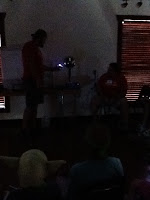.JPG)
.JPG) Everyday in science we learn something new and interesting. As for right now I am going to focus on the Life Cycle. A life cycle describes the cycle of a person or an animals life. We once did the life cycle of a plant too! Here are a few pictures of the two different life cycles that I will describe.
Everyday in science we learn something new and interesting. As for right now I am going to focus on the Life Cycle. A life cycle describes the cycle of a person or an animals life. We once did the life cycle of a plant too! Here are a few pictures of the two different life cycles that I will describe. This is a Life cycle example of a cat . It starts out as giving birth. Then the growth stage. Then the adults reproduce. Then sadly, the death stage.---->
The Plant life cycle is a little different. First is the birth or germination. Then of course the growth stage. Then the pollination (reproduce). Then sadly, the death.----->
And that's all about the life cycle.



.JPG)
.JPG)
.JPG)


.JPG)



.JPG)


































